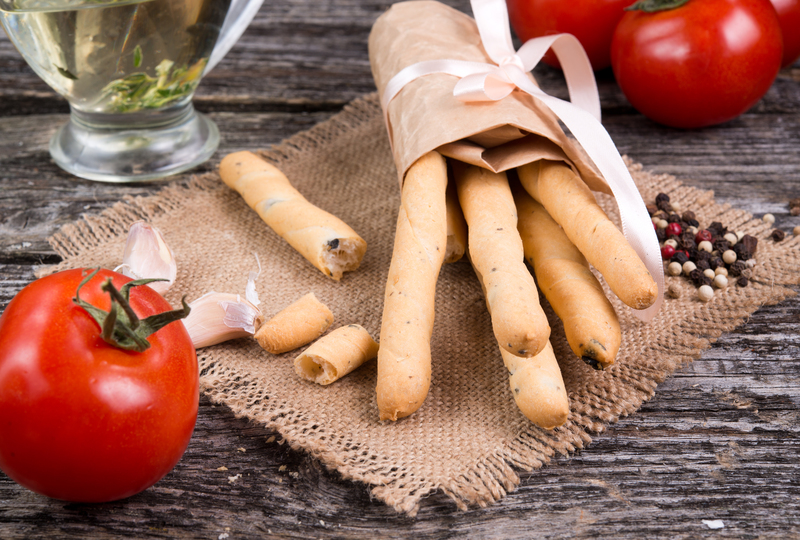Minimizing Landfill Waste With Better Pot and Pan Recycling Habits
Every year, millions of pots and pans are discarded, with many ultimately ending up in landfills. By adopting more effective pot and pan recycling habits, we can make a significant impact on reducing waste, conserving resources, and protecting our environment. In this comprehensive guide, we will discuss actionable strategies to minimize landfill waste, explore eco-friendly disposal options, and highlight the importance of recycling cookware responsibly.
Why is Proper Pot and Pan Recycling Important?
Cookware made from metals, ceramics, non-stick coatings, and plastics does not biodegrade quickly in the environment. Discarding old pots and pans not only wastes valuable materials but also contributes to the growing global waste crisis.
- Metal cookware (like aluminum, stainless steel, and copper) are recyclable and can be repurposed into new products.
- Non-stick pans and Teflon-coated utensils require special recycling due to chemical coatings.
- Ceramic and glass cookware are often non-recyclable in curbside bins but can be upcycled or handled at specialized facilities.
By improving our pot and pan recycling habits, we can:
- Minimize landfill waste
- Support the circular economy
- Conserve resources and energy
- Reduce the environmental impact of raw material extraction

Understanding the Types of Pots and Pans and Their Recycling Challenges
Not all cookware is created equal, and recycling requirements vary by material.
Metal Pots and Pans
- Stainless Steel, Aluminum, Copper: These are highly recyclable materials. Most scrap metal recyclers accept them, even if they have some plastic handles or minor rust.
- Cast Iron: Another excellent candidate for recycling. However, seasoned cast iron might need special processing.
Non-Stick and Teflon-Coated Cookware
- Modern non-stick coatings (like Teflon) contain chemicals that pose environmental hazards if not disposed of properly.
- Standard recycling facilities often cannot process these due to separation difficulties. Specialized facilities are needed.
Ceramic, Glass, and Enamel Cookware
- Most curbside recycling programs do not accept these due to their composition.
- The best option is often upcycling, reusing, or taking them to a dedicated waste facility.
Plastic Pots and Pans
- Less common, but certain storage or microwave-safe pots are made from thick plastics.
- Typically, these must be marked with a recycling code; otherwise, they are destined for landfill unless upcycled.
Strategies to Minimize Landfill Waste With Cookware Recycling Habits
1. Adopt the Reduce, Reuse, Recycle Mindset
The most effective way to minimize waste is simply to buy fewer, more durable pots and pans. Choose quality over quantity.
- Consider multi-functional cookware and avoid impulse purchases.
- Opt for materials that last longer, such as stainless steel or cast iron.
- Repair or refurbish pots and pans when possible instead of replacing them.
2. Donate or Repurpose Before Disposing
- If your cookware is still usable, donate to shelters, thrift stores, or community kitchens.
- Repurpose old pots and pans as storage containers, plant pots, or crafting materials for household projects.
- Host a swap event with neighbors or friends to extend the life of unwanted cookware.
3. Use Specialized Cookware Recycling Programs
Many cities and organizations offer dedicated recycling events or programs for metal household items, including old kitchenware.
- Locate a scrap metal recycler or municipal household hazardous waste drop-off facility.
- Check if local appliance stores or cookware manufacturers offer take-back or trade-in programs.
- Before recycling, remove non-metal parts like plastic handles or glass lids, as these may need separate disposal.
4. Participate in Upcycling Initiatives
Instead of discarding, transform old cookware with creativity:
- Turn retired frying pans into quirky wall clocks or decorative art.
- Use large pots as planters or birdbaths in gardens.
- Transform lids into serving trays, picture frames, or garden decorations.
These innovative ideas help give cookware a second life, further minimizing landfill waste.
5. Compost Food Residue Before Recycling
Many cookware items have stuck-on food or grease which can complicate recycling.
- Scrape out food residues and compost organic waste first.
- Clean cookware thoroughly to avoid contamination in recycling batches.
How to Recycle Different Types of Pots and Pans Responsibly
Metal Cookware
- Take them to your local scrap metal yard. Most accept all types of metals, even mixed or worn out pots and pans.
- Remove non-metallic components such as plastic handles where possible.
- Check with recycling facilities about their preferred method of drop-off.
Non-Stick and Teflon-Coated Cookware
- Contact the manufacturer about take-back programs or inquire about special recycling days in your area.
- Some specialty recyclers can properly handle non-stick coatings, separating metal from harmful chemicals.
- Never place non-stick pans directly in curbside recycling unless specifically accepted.
Ceramic, Glass, and Enamel Cookware
- Donate or creatively reuse these types of cookware when possible.
- Check local construction and demolition recycling centers, as some accept ceramics for reuse in roads or flooring materials.
Plastic Cookware
- Look for a recycling number and consult local guidelines.
- Repurpose for organization or crafts if landfilling is the only disposal route.
Creative Upcycling Ideas for Old Pots and Pans
Tired cookware can enjoy a second life with a little ingenuity. Here are some upcycling projects to inspire better pan recycling habits and further reduce landfill impact:
- Hanging Garden Planters: Old saucepans or frypans can make excellent hanging planters for herbs and flowers.
- Bird Feeders: Suspend a pot by its handle and fill with birdseed for a rustic feeder.
- Organizers: Attach handles or hooks to organize tools, jewelry, or art supplies.
- Wall Art: Paint and mount lids and pans as creative and colorful wall decor.
- Storage Solutions: Use large stockpots to store toys, firewood, or gardening supplies in the garage or shed.
The Environmental Impact of Improved Pot and Pan Recycling
What happens when we make cookware recycling a priority?
- Reduction in resource extraction: Recycling metal cookware reduces the need for mining, which conserves natural resources and lowers greenhouse gas emissions.
- Energy conservation: Melting down recycled metals requires significantly less energy than producing new metal from ore.
- Less landfill overload: Diverting heavy and bulky pots and pans from landfills helps prevent overflowing waste sites and associated pollution.
- Reduction of hazardous materials: Recycling non-stick pans prevents harmful chemicals (like PFOA and PFAS) from leaching into soil and groundwater.
Common Myths About Pot and Pan Recycling
- Myth: All pots and pans go into curbside recycling.
In reality, most curbside programs do not accept large metal items or non-stick cookware. Specialized centers or scrap yards are more appropriate. - Myth: If a pan has plastic or wood handles, it can't be recycled.
Handles can usually be removed and discarded separately so the metal can still be processed. - Myth: Damaged cookware can't be recycled.
Broken, dented, or rusted metal is still fully recyclable through scrap metal facilities. - Myth: Non-stick coatings always make recycling impossible.
While it's more complicated, some specialty recyclers do process non-stick pots and pans.
Promoting a Culture of Cookware Recycling in Your Community
The shift toward minimizing landfill waste through better pot and pan recycling can be accelerated by community involvement. Here's how you can make a difference:
- Organize neighborhood cookware recycling drives in partnership with local recyclers or charities.
- Share tips for upcycling and reusing cookware on social media or at local workshops.
- Volunteer at recycling programs and help educate others on correct cookware disposal methods.
- Encourage schools and organizations to include cookware recycling awareness in their sustainability programs.
Take the Next Step: Sustainable Cooking Starts With Responsible Cookware Disposal
Every pot and pan recycled is a small but meaningful victory in the fight against unnecessary waste and pollution. By reinforcing eco-friendly cookware recycling habits and sharing them with others, we can collectively reduce landfill waste and support a greener planet.
Remember:
- Choose durability and repairability in new cookware.
- Donate, upcycle, or recycle old pots and pans whenever possible.
- Educate your community and lead by example.
Minimizing landfill waste begins at home -- with every pot, pan, and responsible choice.

Frequently Asked Questions About Recycling Pots and Pans
- Can all pots and pans be recycled?
Most metal cookware can, but special care is needed for non-stick, glass, and ceramic items. - Where can I recycle cookware?
Scrap metal recyclers, municipal drop-off centers, or sometimes through manufacturer take-back programs. - What if my pans are badly damaged?
Damaged cookware can usually still be recycled for its base materials. - How can I make my kitchen more sustainable?
Invest in quality cookware, practice regular maintenance, and dispose of items responsibly.
Conclusion: Transform Your Kitchen Habits for the Environment
By adapting better pot and pan recycling habits, you help minimize landfill waste, conserve resources, and set an example for eco-conscious living. Take action today to ensure your old pots and pans avoid the landfill and make a positive impact on the world around you.